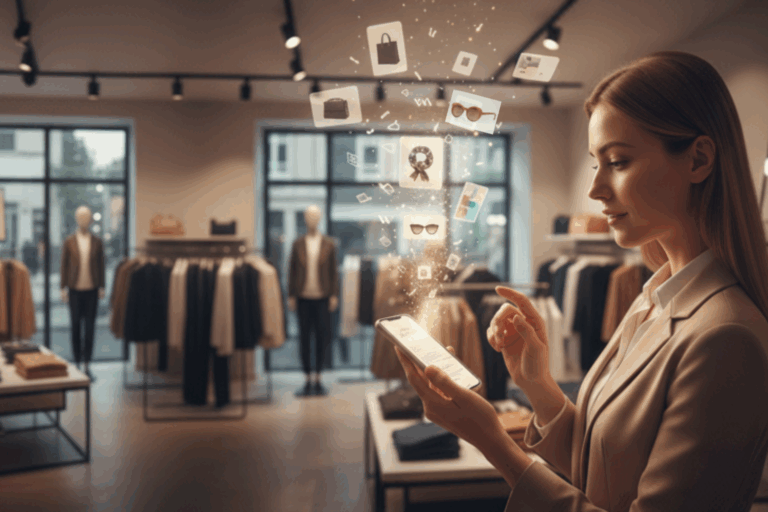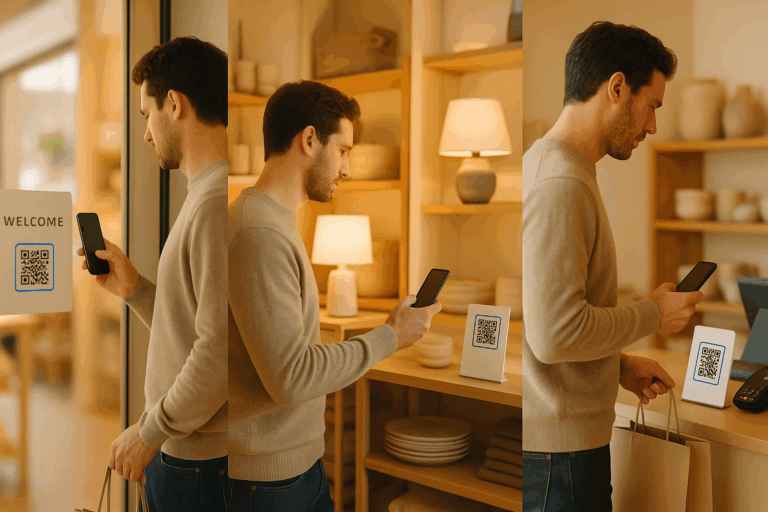In-store customer data has long been hard to extract, and as a result hard to make the most of. While data from online shoppers is fairly easy to extract, it does present a different behaviour model than in-store customers. Online shopping is typically done with purpose, whereas in-store shopping has an element of experience, enjoyment and leisure to it, which can directly impact shoppers purchasing decisions.
When a retailer has a solution to capturing this in-store customer data, it gives retailers a chance to enhance marketing strategies, hyper-personalise customer experiences, optimise pricing and generally improve the overall operational and customer efficiency.
We present seven different ways retailers can use in-store customer data to improve brick-and-mortar shopping experiences, and how having access to that information can make massive differences for a retail brand.
1. Measure the Effectiveness of Marketing Campaigns
Having transparency when it comes to customer data is fantastic. Having this avenue available allows retailers to connect their in-store purchases with online campaigns, therefore reducing the guesswork when it comes to tracking conversion rate, ROI and ROS. Without the missing piece of in-store purchases, marketers do not have a holistic understanding of the effectiveness of the online campaigns.
In-store customer data provides valuable insights for future campaigns, such as the ads on which product, distributed via which platform, and in which regions did the ads perform the best. Therefore, the marketing team can allocate budget and resources more efficiently, improve operational efficiency and reduce costs.
2. Personalisation
Much more than a buzzword now, personalisation is the minimum expectation in this interconnected world. Retailers can use modern retail technologies like digital receipts to gather in-store customer data, enrich customer profile, and launch data-driven personalised promotions across online and offline channels.
With modern retail technologies like digital receipts, retailers can personalise customers’ in-store shopping experience by e.g., pushing personalised campaigns where a customer receives exclusive vouchers when they purchase X amount of items in-store, or receives targeted promotions based on an item that they might like.
It’s financially worth it too with personalisation efforts, pricing, and discounts to specific customer segments, brick-and-mortar retailers can see a revenue lift of 10-20% and improved marketing spend efficiency of up to 30%. The more personalised the customer journey is, the more they will feel listened to and that their interactions with a brand are valuable and satisfying, encouraging brand loyalty and enhancing retention.
3. Targeting Using In-Store Data
Being able to personalise is one thing, but having better targeting allows for a more efficient way to market and predict what is coming next. In-store data enables retailers to pre-empt marketing campaigns and general store operations for those high-value segments of their customers, making sure that they are offering a more effective and efficient way to acquire and retain customers.
4. Market Basket Analysis
Digital retailers have been able to peek into shoppers baskets to identify trends and patterns. This data facilitates the opportunity to enhance cross-selling and upselling opportunities. What would seem as a friendly recommendation of products that work in harmony with each other for the customer, is another chance to increase the average order value.
This can also translate in-store through methods such as in-store promotions and targeted product placement, creating opportunities to boost sales. It also gives the customer the satisfaction that they have everything that they need, and are able to find it as well.
5. Demand Forecasting
In-store customer data is very powerful, and when matched up with other indicators such as seasons, weather, trends, sales history and other promotions, the ability to improve demand forecasting grows.
What does this mean for the brick-and-mortar retailer? It offers a chance at being able to action better merchandising and supply chain decisions. The stores are more likely to have the right products in the right quantities, reducing the chances of stockout and the frustration that can bring to customers, and overstock that can take up space and increase costs.
6. Operational Efficiency
One of the best ways that having in-store customer data can help any retail business is to offer the data and quantitative information needed to make informed operational decisions.
From effective inventory management and resource allocation to how the store is laid out, this data offers a quantitative basis for a retailer to make choices and measure the outcomes.
If a store is always busy on a Saturday morning, but quiet on a Wednesday, the natural choice would be to reduce staffing. However, insight showing that while the store is quieter on Wednesdays, the average basket size is five times larger and takes twice as long, justifies deploying more staff with specialist knowledge. Retailers can see where staff need additional support to help customers and how best to implement that.
It’s not simply more staff, more stock versus less staff, less stock. In-store customer data, matched with any digital data that the retailer has, allows for the business to make shopping with them better all round.
How to Capture In-Store Customer Data
Retailers can leverage the power of smart in-store touchpoints, like digital receipts provided by refive, to gather customer data and enhance personalisation efforts. By incorporating special offers, personalised campaigns, and digital services within digital receipts, retailers can turn every customer interaction into a data-gathering opportunity. When customers scan a QR code to access their receipt or engage with these touchpoints, refive automatically captures customer and purchase data and unites it into an anonymous customer profile. refive also pulls data from online channels to create a 360-degree view of the customer and their omnichannel journey. Each time the customer opens a receipt, clicks on an offer, submits feedback or redeems a coupon, their profile is enriched with this additional behavioural, attitudinal and engagement data for even deeper insights into their needs and preferences.
In doing so, retailers can seamlessly capture opt-ins, enrich their CRM, collect feedback, and use in-store data for targeted marketing and loyalty strategies, driving greater engagement and long-term customer retention.

These seven reasons are just a few examples of how that level of data can make a difference. Retailers can leverage in-store customer data to gain more chances for greater profitability and overall customer engagement and loyalty.
Apart from increased sales and more efficient internal operations, it’s a chance to reduce overall operational costs. That means the profitability improves allowing retailers to increase their input into the stores, create better marketing campaigns, allocate budget and resources more effectively, improve customer retention, and boost sales.
For more information on how to capture this in-store customer data, or to find more about how your retail store can benefit from refive, get in touch today for a free demo.









